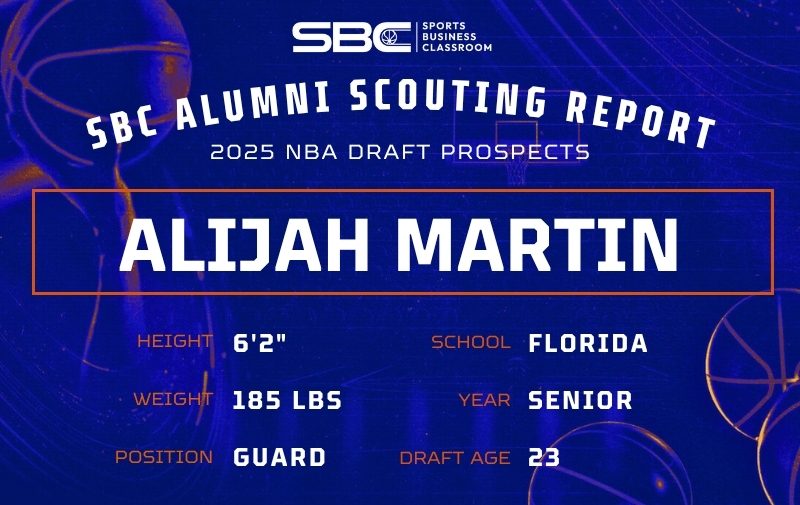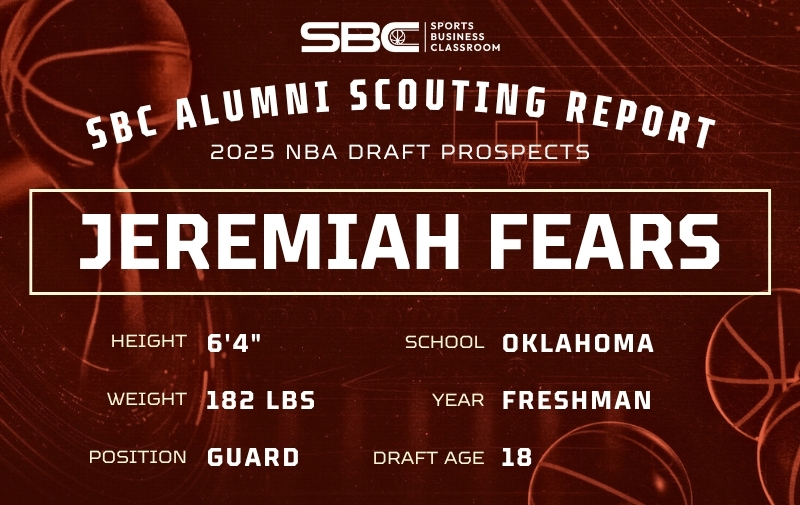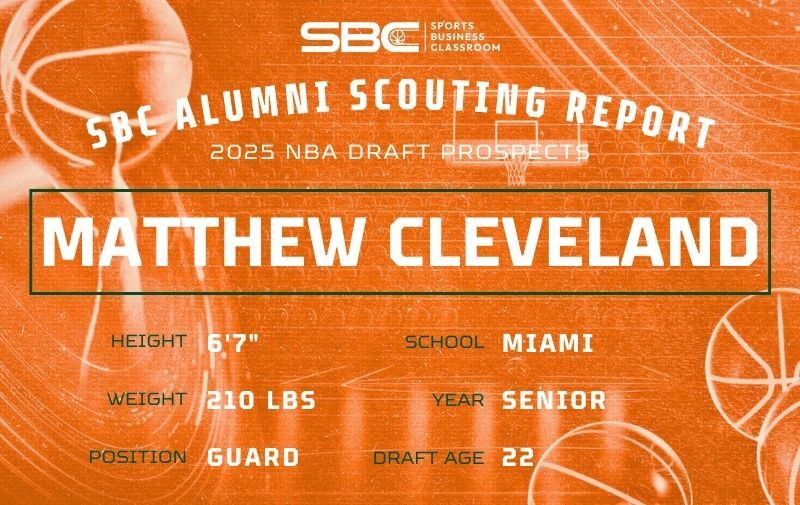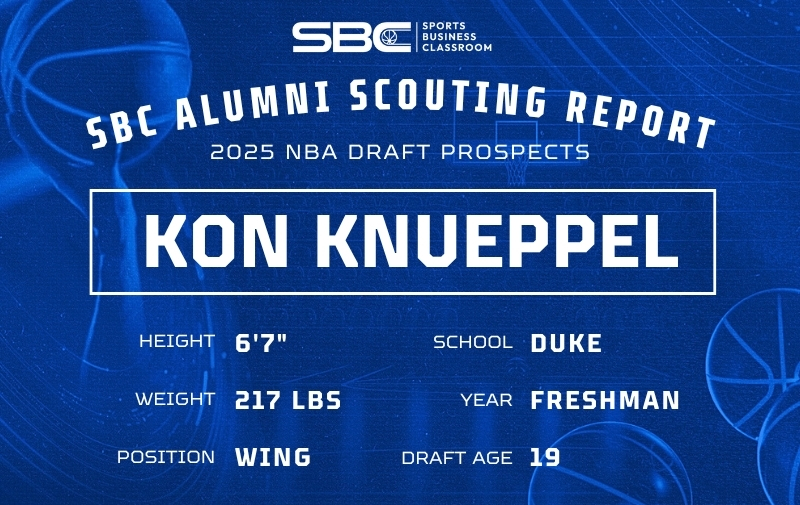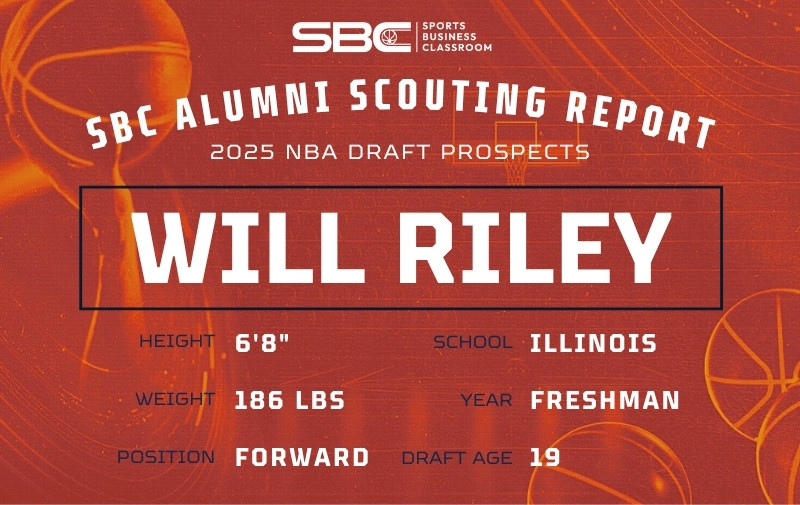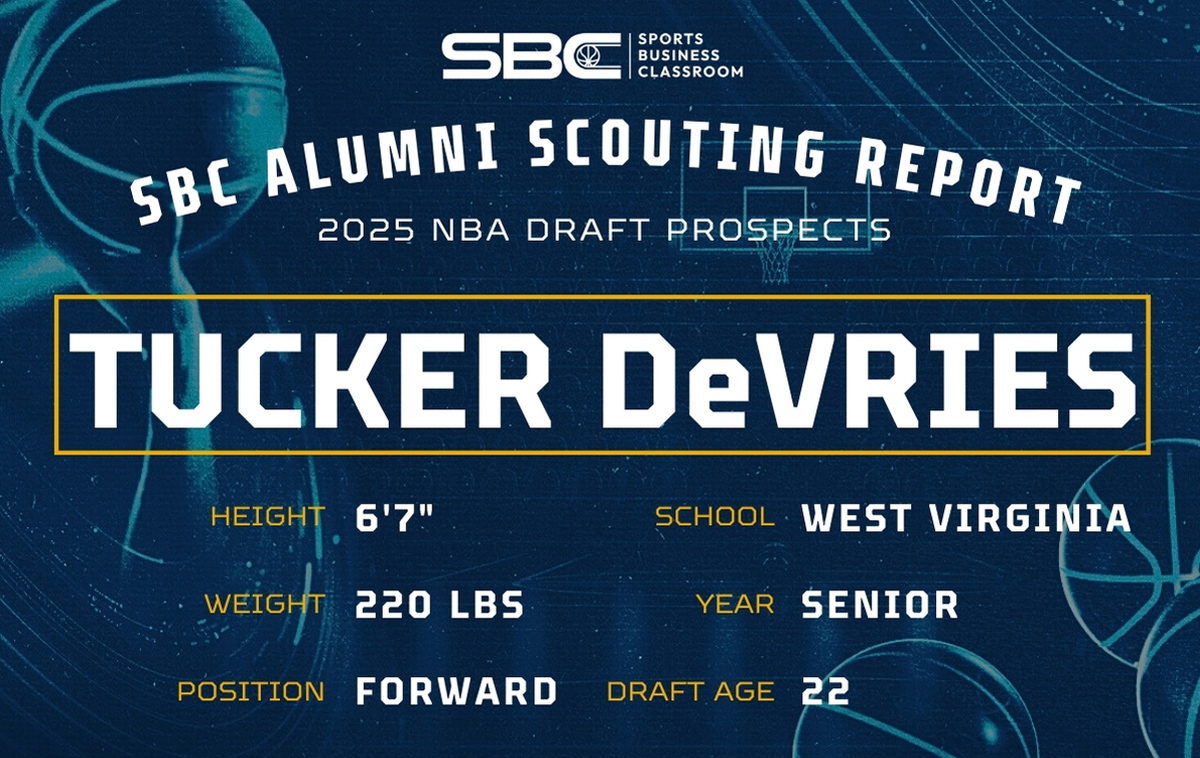
[The following scouting report is part of a series on potential 2025 draft prospects from Sports Business Classroom alumni.]
Tucker DeVries
Frame: 6’7″, 220 lbs
Position: Forward
Team: West Virginia Mountaineers
2025 Draft Age: 22
Stats via www.sports-reference.com
Offense
DeVries has made a name for himself throughout four collegiate seasons for his three-point shooting (36.5 percent on 727 attempts). The former Drake Bulldog joined his father, Darian DeVries, at West Virginia this season, where his three-point shooting jumped to 47.3 percent on 55 attempts while being assisted on 92.3 percent of these shots. DeVries has sound mechanics and a high release, and his height makes it difficult for defenders to contest. He has deep range on his shot and is a threat to pull up at a moment’s notice, capable of shooting from thirty feet deep. His teams deploy him mainly as an off-ball weapon, coming off pindown and stagger screens that, paired with his quick trigger release, make it a difficult action for opposing teams to defend. He is an excellent floor spacer and stationary shooter as well.
DeVries has decreased his usage rating from 30.6 the previous year to 20.6. This off-ball role has allowed his secondary playmaking to shine, as he attacks off the catch and finds open teammates. DeVries does a good job finding the open man and taking advantage of the defense rotating, hitting the open shooters in the weak side corner or his big man in the dunker’s spot. He is unselfish and will pass up a good shot for a better shot, along with getting the ball upcourt in a hurry in transition. He can be susceptible to attempting difficult passes occasionally where his touch can be lacking, specifically on cross-court passes—averaging 2.8 assists with an assist percentage of 15.7 percent to 1.9 turnovers with a turnover percentage of 15.7 percent.
Despite struggling with long twos to start the season (two for 16 through eight games, DeVries shot 42.6 percent on 202 attempts while being assisted on 20.9 percent of these shots the previous season with Drake. He can struggle to create separation, as he understands how to use his size to keep defenders from the ball, but he lacks an advanced handle or burst to put defenders behind him. It wasn’t much of an issue in previous years, simply being able to rise over defenders; a combination of better competition, a different role, and a small sample size due to injury makes it difficult to judge.
These same points can be said for his ability to score at the rim, as DeVries shot 64.4 percent on 104 attempts while being assisted on 46.3 percent of these shots his last season at Drake. Before injuring his upper body, DeVries shot 50.0 percent on 14 attempts at the rim while being assisted on 50.0 percent of these shots. He could finish over smaller defenders during his tenure at Drake, even without getting past his initial defender. DeVries did struggle occasionally with finishing through contact against big men and has struggled to do so in a limited sample size this season.
Defense
DeVries’s on-ball defense has remained a concern throughout his career. His below-average foot speed and overall athleticism make it difficult for him to stay in front of real offensive threats. However, he has shown the ability to keep less skilled big men in front of him and alter their shots down low against NBA-sized bigs. He can be overwhelmed by their physicality, although he can get a hand on some shot attempts, averaging 1.5 blocks through eight games; he averaged 0.3 blocks in the previous season. He has good hands and can pluck the ball from driving offensive players, averaging 1.8 steals with a steal percentage of 3.0 percent. Though not prolific, his steals typically occur when positioned as a strong-side defender who can pick off lazy passes.
DeVries can surprise offensive players by intercepting passes when positioned one man away. He does a fine job showing to driving ball handlers when one pass away and making them stop or try to pass the ball. DeVries can fall asleep and lose sight of his man when positioned on the weak side or multiple passes away. He often gets caught on off-ball screens, resulting in his man getting an open look or the offense getting a quality look overall. He is a quality defensive rebounder, averaging 4.8 defensive rebounds over four seasons with a defensive rebounding percentage of 16.8. He has a touch on the glass even when matched with bigger players, and he has good anticipation on when to go up for the ball or tip it to himself or a teammate.
Looking Ahead
Before being sidelined, DeVries helped his father turn around West Virginia’s program, showcasing why he was one of the country’s best mid-major players and overall shooters. DeVries’ shooting and connective playmaking at his size give reason to believe he can fit seamlessly on an NBA roster; however, defensive and athletic concerns hamper those beliefs.
DeVries projects as a rotational piece and floor spacer at the forward position at the next level, possibly as a mid-to late-second-round pick.


